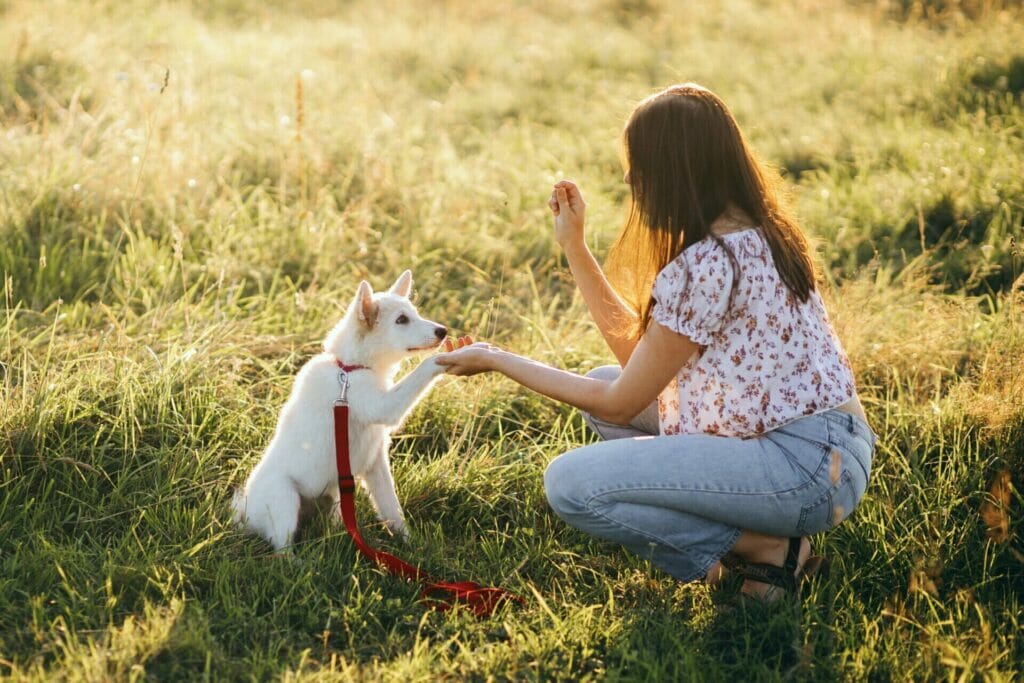Have you ever noticed your pup isn’t interested in their food or a dog treat when they are outside or in a new or distracting environment? Does your dog ignore their favorite treat when they are in the presence of other people or dogs but easily enjoy it when inside your home? Rest assured, this is totally normal! When distractions increase or your dog’s emotions reach their threshold, you need to increase the value of their treats and positive reinforcement in order to keep their focus.
Treats and rewards can be used for a variety of different reasons for your pup! If you’re teaching them a new trick, you can use rewards to let them know that they’ve done the correct behavior. If your dog is worried about other dogs out on the street, you can feed them treats once they’ve noticed the “trigger” to counter-condition their response to the thing they’re afraid of. Basically, we use dog treats and rewards to communicate with our pups to either encourage them to practice certain behaviors more, or to change their emotions about something they feel negatively towards. Also known as positive reinforcement training.
You might hear some dog trainers recommend you break out a “high value reinforcer” or “increase the value of your reward”; this is fancy dog training lingo for feeding or providing your dog with something that they really love. We’re looking for a high enough value reward / reinforcer that initiates an immediate response from your pup, even when they’re in the presence of something that might be distracting or making them feel emotional.
What is your dog’s value system?
You might need to experiment and play around to see what the most valuable reinforcer is to your dog. What gets one dog’s immediate focus might not work the same way for another dog.
Here’s a general outline of the hierarchy of a dog’s value system from lowest to highest:
- Kibble
- Rope toys
- Soft chewy treats
- Balls
- Freeze-dried treats
- Flirt Poles
- Squeaky toys
- Jerky for dogs
- Wet dog food
- Spot & Tango’s UnKibble
- Hot Dogs
- Cheese
- Chicken
- Liverwurst
- Marrow Bones
- Bully Sticks
- Steak
It’s helpful to know what your dog finds the most “valuable” when you’re introducing distractions to your training plan, or if your dog is in a distracting environment. When you step outside, you are competing with a variety of different motivators for your pup that are likely to capture their attention. Since you want your dog to find YOU most valuable to them, adding in high value reinforcers is the most effective way to create a strong positive association to you for your dog. This helps them learn that being responsive in the face of distractions gets them the best rewards ever.
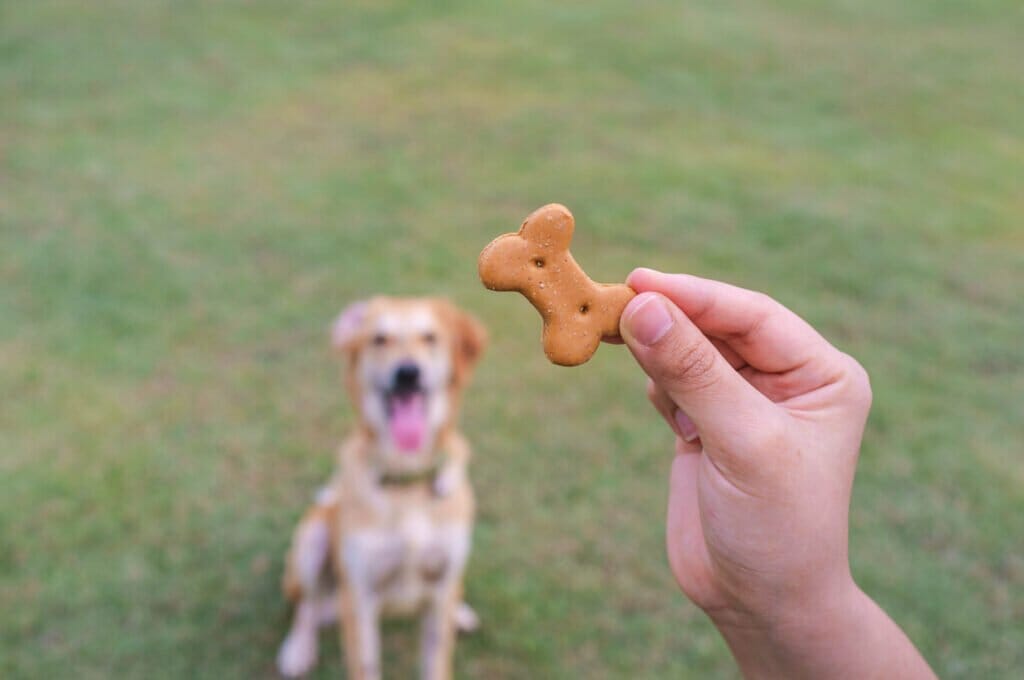
Why rewards and positive reinforcement instead of dog treats?
Not all dogs are particularly food motivated! Though this changes between individual dogs and doesn’t correlate with breed, you may find that higher-energy dogs or some working breeds may find toys and play more reinforcing than food. Cattle dogs, for example, can be reinforced not only by toys and play, but a certain style of toys and play: ones that involve movement that simulates the herding experience.
Don’t limit yourself to one type of reinforcer. Over the course of several training sessions, try out multiple different reinforcers, a variety of treats, toys, and games, and keep a journal to track what your dog responds to most.
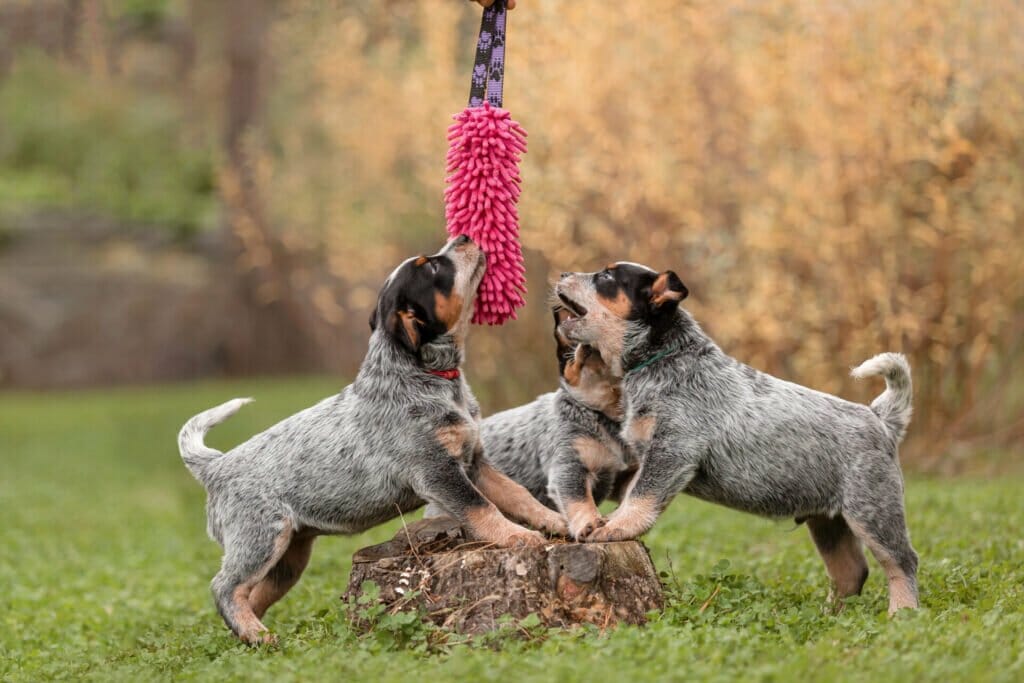
My dog is very food motivated, but I’m worried about my dog’s health. I don’t want to give him so many treats!
The good news is that you don’t have to over indulge your dog in treats. Dogs are more interested in the quality of taste over the quantity of treats they consume. We suggest breaking off a super small crumb like piece when rewarding your pup. Dogs are not picky about quantity. Your baseline treat can be a tiny pinch but it’s important to create variation, either by switching up the quantity or quality of treats to keep your pup on their toes. Dogs experience a similar serotonin burst from a small pinch to an entire handful, so training is more effective if you tend to give them less treats per reinforcement, but more reinforcements overall. This will also help make your treats last longer.
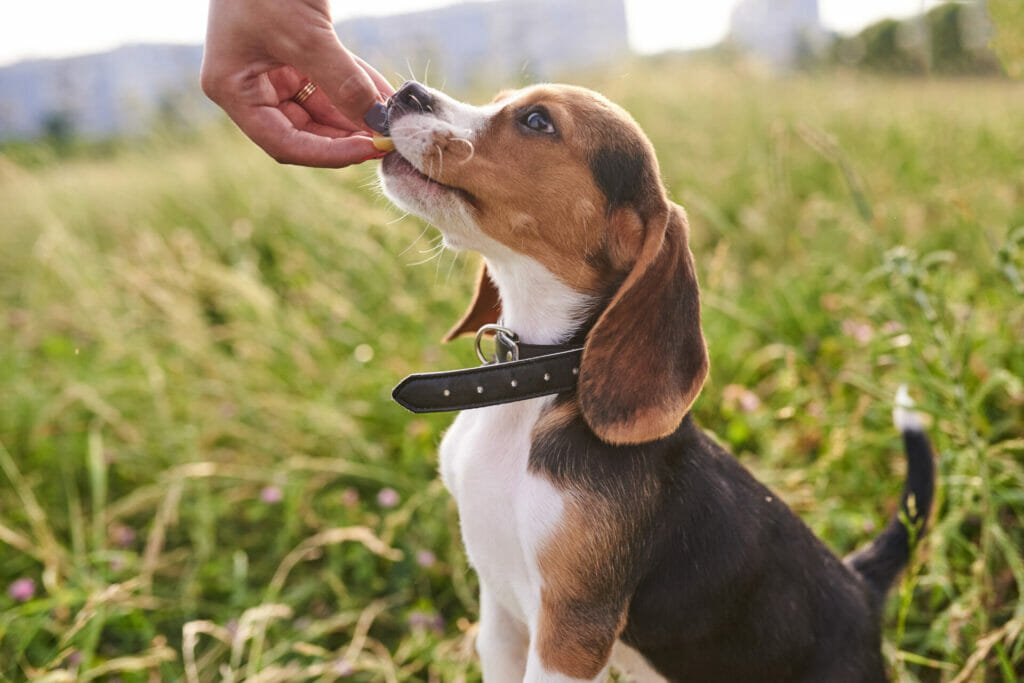
Use meal time as training time
You can use your meal times and provide your dog’s breakfast, lunch, and/or dinner as the rewards to ensure they are getting their daily nutrition and you don’t have to worry about over feeding them. What’s great about using UnKibble is that it’s healthy AND considered a high value reward due to the quality of ingredients. This is also a great opportunity to hand feed your dog to establish the association that all good things come from you! This makes you very valuable to them and helps create a strong relationship.
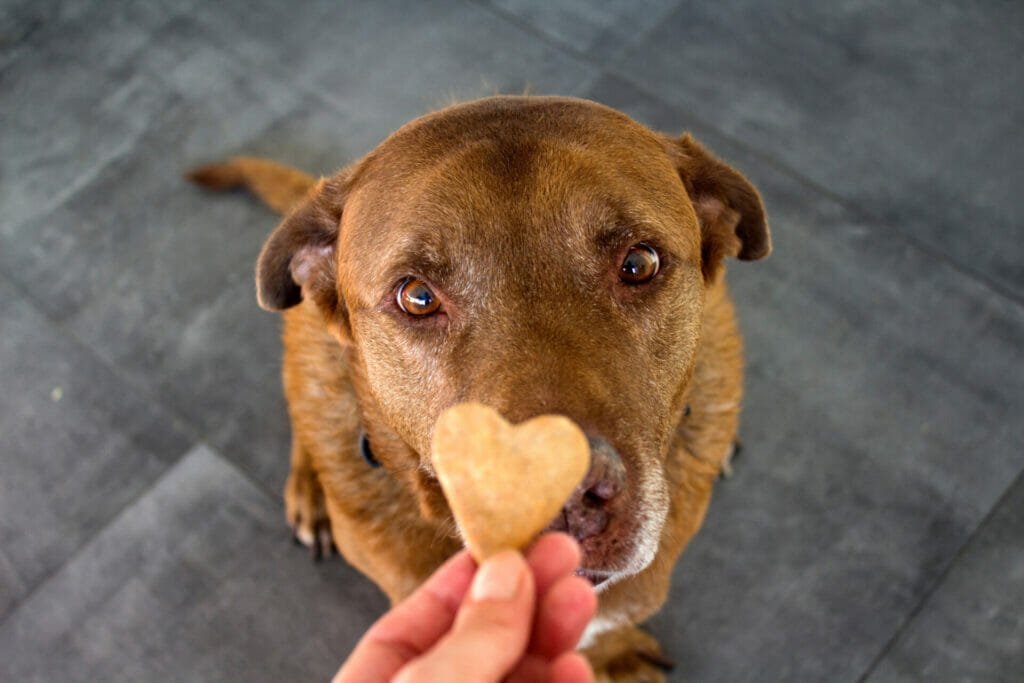
My dog loved cheese but now doesn’t care about it?
Just like us, dogs get tired of eating the same thing over and over again. Add variety to your dog’s treat and reward schedule by switching up the treats they receive. We recommend having three different high value dog treats that you rotate between to keep it fresh for your dog!
What are you waiting for?! Go out and get that chicken, that cheese, those meatballs, UnKibble, or that special rope toy that your dog just loves! You’ll see a huge difference in their ability to focus on you and learn more things more quickly! Tell us your pup’s favorite treats at whathepup@spotandtango.com!


